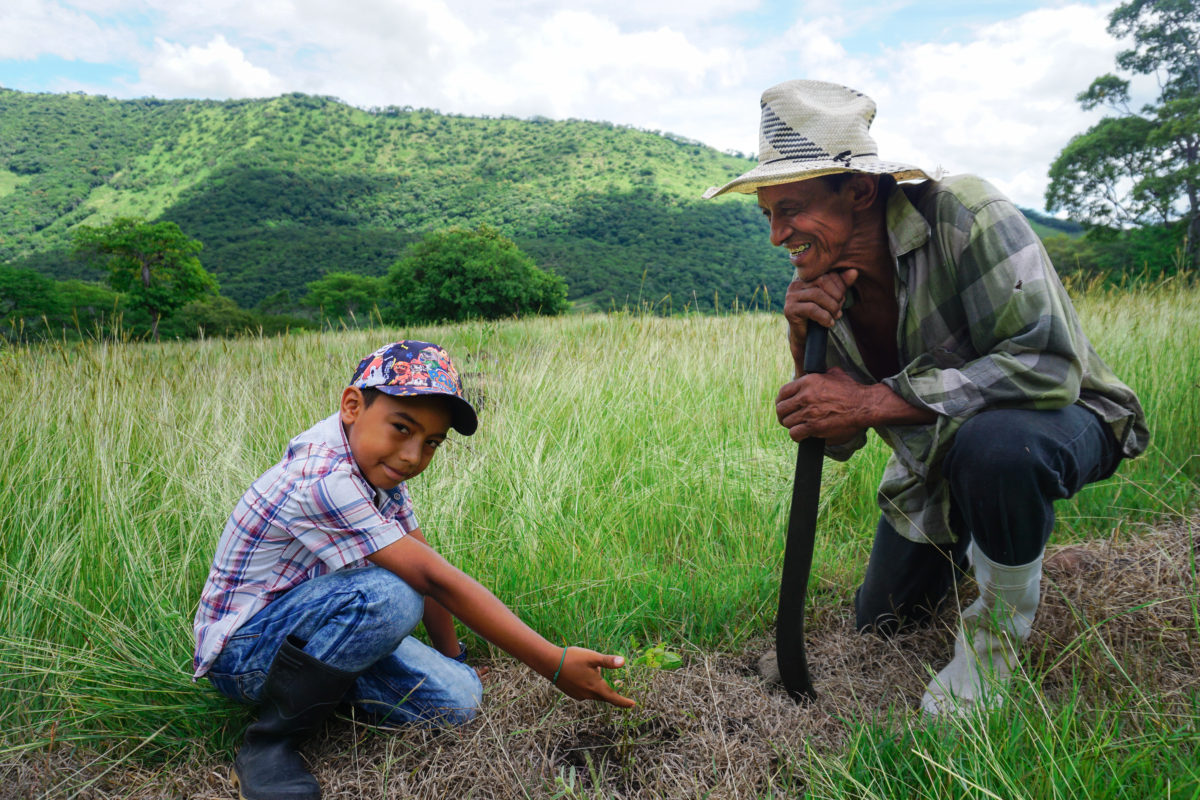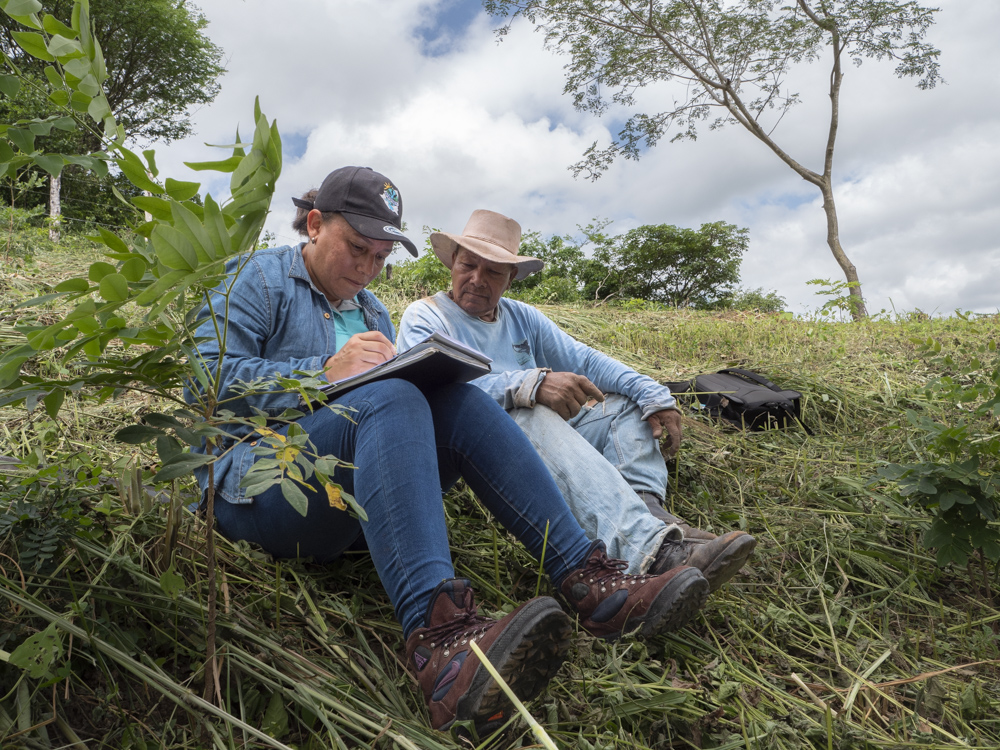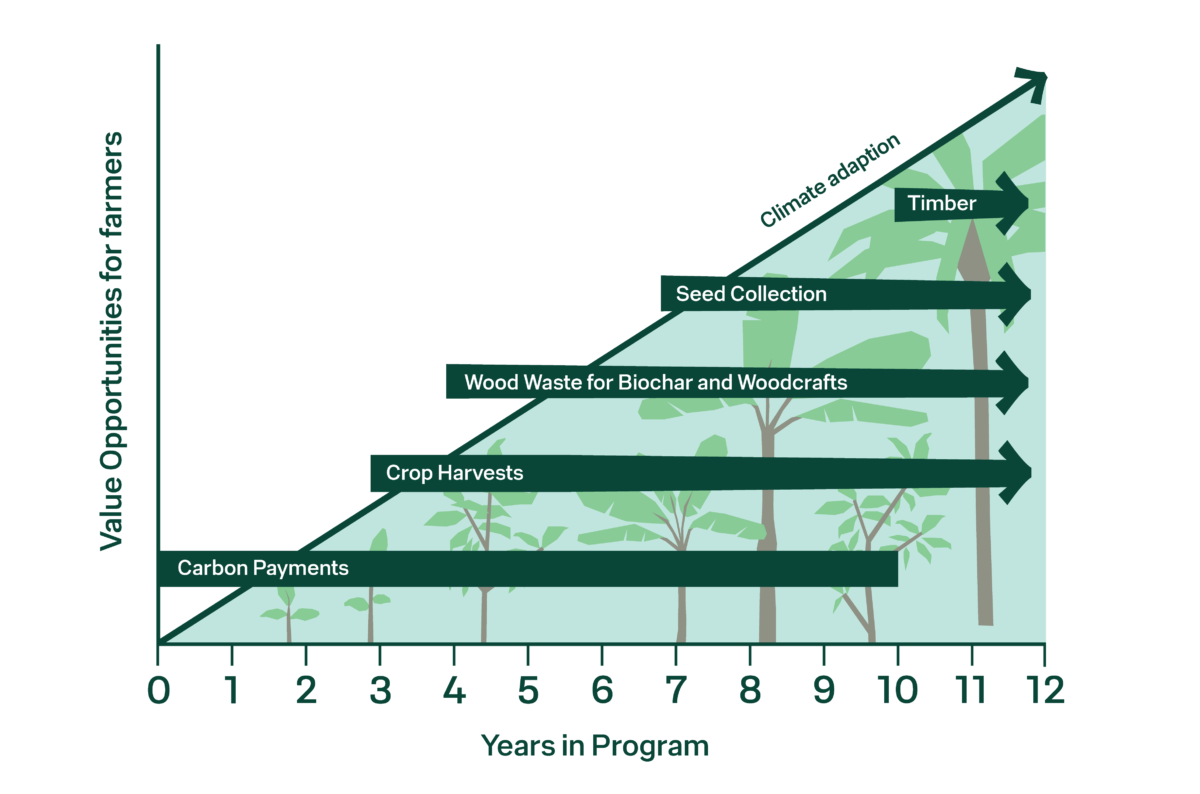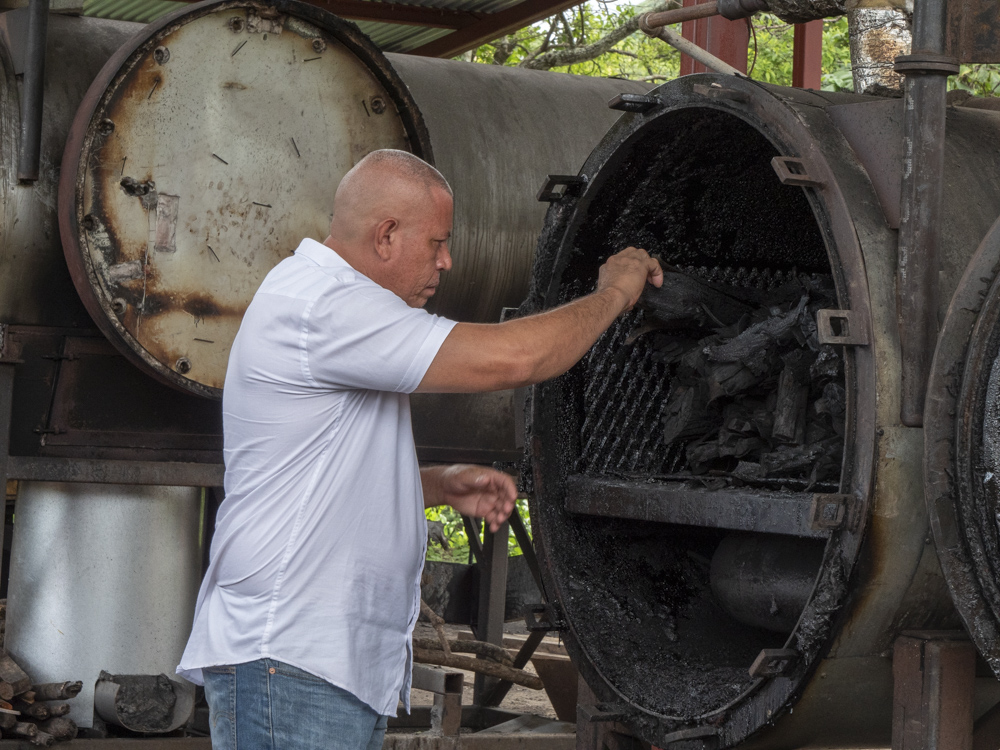In a previous blog , we discussed the concept of equitable benefit sharing, or how the value from the sale of carbon credits is shared between communities and other actors. While we explored the importance of ensuring that value is shared fairly with communities, we didn’t delve into the various forms that value can take.
This is an equally, if not more important discussion, as communities often define value differently and therefore the mechanisms through which value is shared may vary. In this blog, we explore the types of value that can be shared with communities, as well as three guiding principles for market actors to follow when tailoring their approach.
Value can take many forms for communities
Market participants most often think of value as monetary payments. That is, when a share of carbon credit sales revenue is given directly as money to communities (e.g., smallholder farmers) who have implemented a climate solution (e.g., reforestation). This concept has been referred to in a number of ways, whether that be as carbon payments, payments for ecosystem services, or cash payments.
But that’s just one example of benefit sharing with communities. There are many others, including investment in job creation, improved farming practices, and climate resilience, to name a few. With so many options available, buyers, project developers, and other market participants need to understand how to choose the right ways to deliver value.

3 guiding principles for sharing value with communities
1. Ask communities directly what would valuable for them.
There are several key considerations to keep in mind when it comes to benefit sharing with communities. First and foremost, communities must be at the forefront of defining what they consider to be valuable. Value needs to be meaningful and relevant to the needs and priorities of communities in order for them to want to grow trees. For example, in CommuniTree, some farmers were open to growing trees but didn’t want that to be at the expense of their cattle rearing. We worked with those farmers to define a system where farmers could grow trees while leaving space for their cattle to roam. In that case, a low-density forest was designed to let farmers retain the value from their cattle. At the same time, they get additional value from the shade that trees provide for their livestock, as well as from the additional revenue received for growing trees.

2. Focus on reducing barriers that prevent communities from implementing climate solutions.
Another important consideration is to identify and address any barriers that communities may face in participating in climate solutions. Often, farmers would like to grow trees but they lack the funds needed to start a forest. In other instances, there is a lack of long-term incentives (e.g., no market for timber), that prevents a farmer from wanting to maintain a forest. By addressing these barriers, it becomes easier for communities to make land-use choices in favour of natural climate solutions.
3. Diversify value across the short, medium, and long-term.
The last consideration is to ensure that communities are able to obtain value from growing trees in the short, medium, and long-term. If value is weighted too heavily into short-term incentives, farmers may be less likely to continue maintaining their forests once those incentives stop. Conversely, if value is weighted too heavily into long-term incentives, there isn’t enough initial payback to motivate farmers to get started. Diversification across time scales helps to balance this.
CommuniTree: a case study for benefit sharing
Following these principles helped to drive CommuniTree to become the largest reforestation initiative in Nicaragua, and one of the largest and most trusted smallholder carbon projects in the world. The central tenet of the program–enabling people to improve their livelihoods by growing trees–has become Taking Root’s mission statement.

We shared the above figure in a past article to illustrate some of the various ways that farmers in the CommuniTree Program can improve their livelihoods by growing trees. While we previously described each activity in detail, here we’ll share the thinking behind a few of the activities through a lens of benefit sharing.
Carbon payments: An easy benchmark
When we first registered CommuniTree as a Plan Vivo project, we had to ensure that 60% of the revenue that we received from the sale of carbon credits went back to farmers. Plan Vivo refers to this as Payments for Ecosystem Services (PES). While PES can be distributed through a variety of ways, CommuniTree was set up to distribute PES as cash payments to farmers over a 10-year time period.
When we asked farmers about their desires to grow trees, they often expressed that despite their dreams of having forests , they lacked the funds to be able to grow them. While we knew that forests could yield future incomes through various forest products, we recognized that farmers needed short-term compensation to get started.
Taking Root uses carbon payments as a baseline for value in CommuniTree. Using the 60%, we always have an amount to directly allocate and trace to farmers. This keeps things simple while also ensuring those doing the work are receiving the majority of the benefits. It also means that as credit prices increase, communities benefit directly. In reality, we invest time and resources beyond the 60% to create other forms of value for farmers.
Biochar: value for farmers new and old
Biochar is a form of charcoal that is produced by heating organic matter, such as wood or agricultural waste, in the absence of oxygen. When biochar is added to soil, it can improve crop yields and tree health, while also storing carbon in the soil. When farmers prune and thin their trees, they create wood waste that could be purchased and used to create biochar. This would provide farmers with a source of income in their forests’ early years, which is particularly important as the trees are too young to provide other types of value.
For APRODEIN–our reforestation partner–to purchase biochar , the facilities, equipment, and staff needed to produce it must be in place. In the CommuniTree Program, this was addressed by investing in the construction of a biochar reactor, which allows APRODEIN to purchase wood waste from farmers to produce biochar. By investing in the infrastructure needed to produce biochar, the CommuniTree Program is able to create additional income sources for farmers while also improving the tree-growing conditions of new farmers in the program.

Timber: sustainable harvests for long-term benefits
With forests starting to mature from some of the early farmers of the CommuniTree Program, trees will soon be ready to be selectively harvested*. This can provide long-term, sustainable revenues for farmers. The challenge is that in Nicaragua, there is not much of a market to process or sell timber. On top of that, there are regulatory hurdles to overcome.
*Note that selectively harvested trees, when done sustainably, allows for the carbon stock to remain stable. This is because after you harvest one tree for timber, you wait until sufficient regrowth and regeneration has occurred before harvesting another tree.
To enable a market for timber, Taking Root is investing carbon credit revenues into equipment, facilities, and staff–on both the Taking Root and APRODEIN teams. This creates long-term revenues independent of carbon credit sales that give incentive for farmers to maintain their forests. To bring it back to benefit sharing, it lets farmers obtain more value than if it were a cash payment as a share of carbon revenue.
What does this mean for the carbon market?
The various forms of value that can be shared with communities highlight the complexity and diversity of benefit sharing in the carbon market. We previously mentioned that there is no one-size-fits-all approach to benefit sharing, and this is worth emphasizing again. Different communities have different priorities and needs, and the most appropriate form(s) of value to share may vary depending on specific contexts and circumstances.
Communities might define value differently, face different barriers to engage in implementing climate solutions, or need a different spread of short, medium, and long-term incentives. This makes it extremely challenging to apply a standardized percentage across all projects. Approaching benefit sharing across all projects with the above principles in mind helps to ensure that benefit sharing is fair and effective.
We hope that some of our considerations helps guide others as they navigate integrating benefit sharing into their own projects. We too are always looking to innovate and improve, particularly around delivering value in the medium to long term. While there is still a lot to figure out, one thing is clear: we are committed to ensuring that farmers and communities on the ground are those who are benefitting the most.